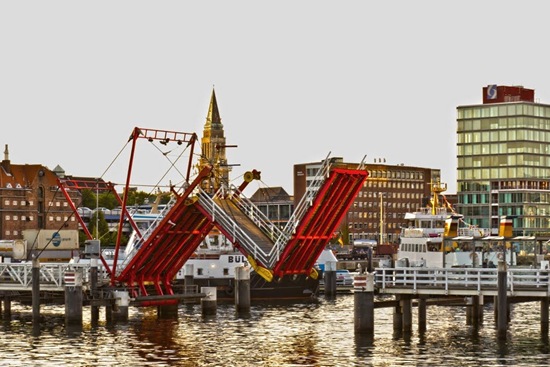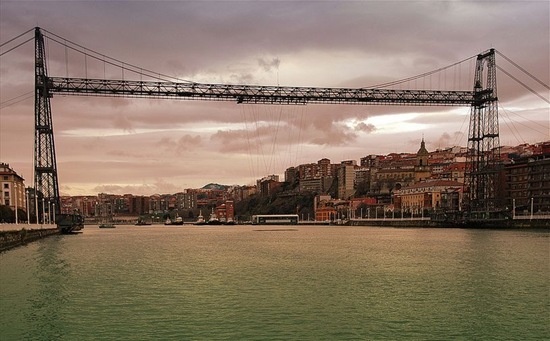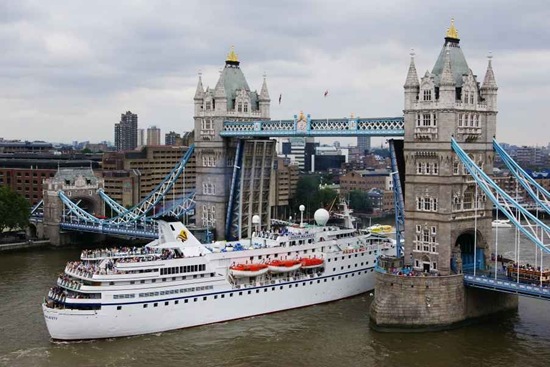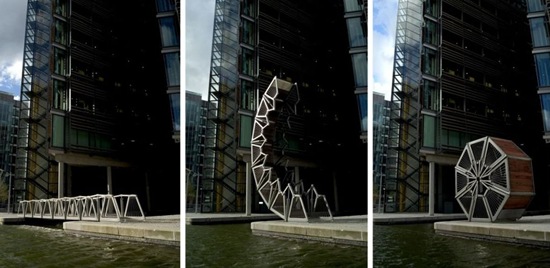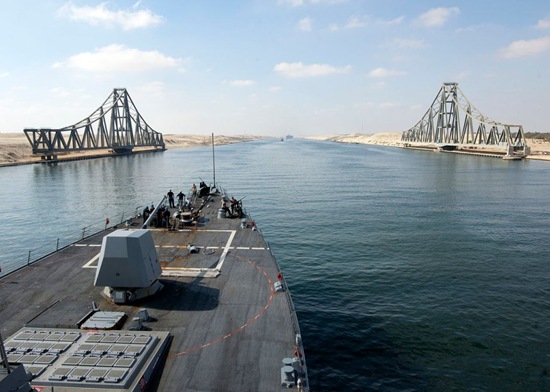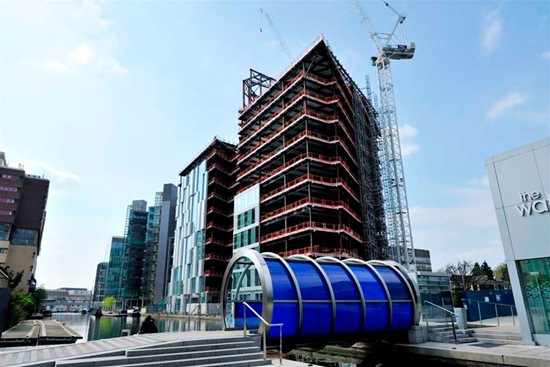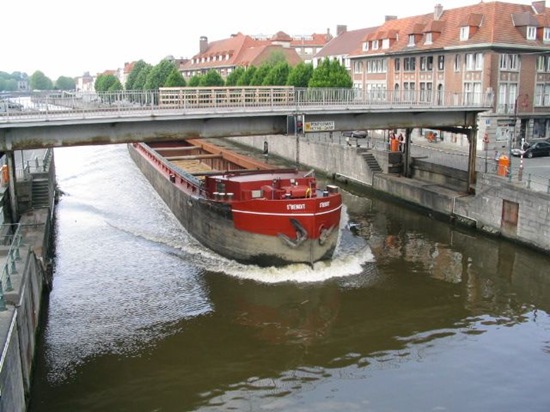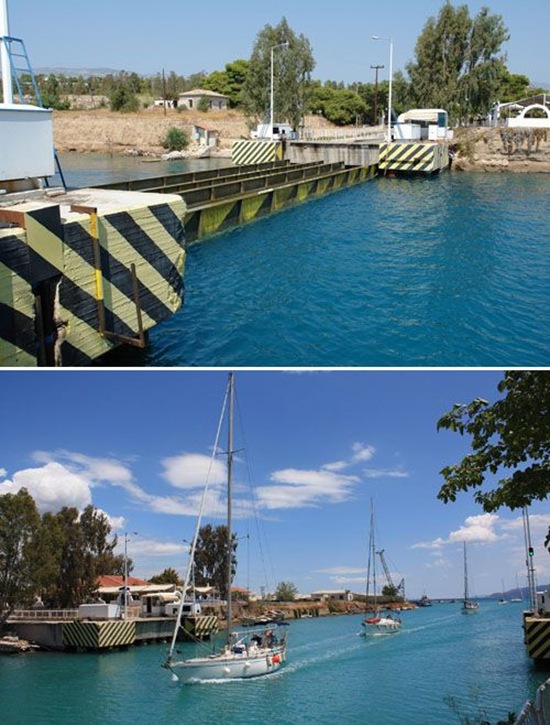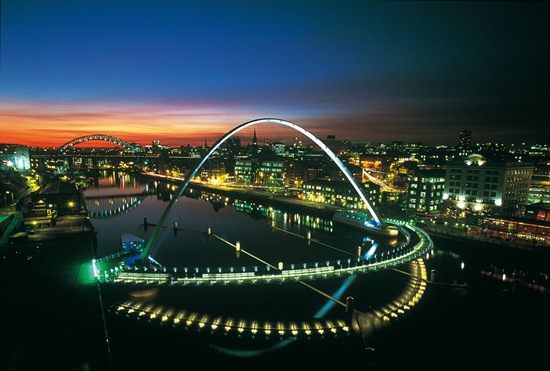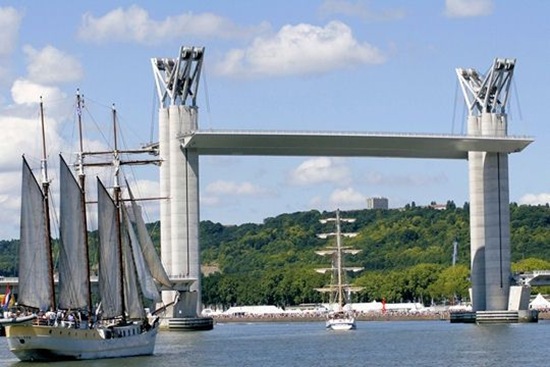Bridges play a crucial role in connecting people, places and commodities. Yet as well as being functional, a lot of these structures are designed with an imaginative touch that adds to their surrounding environments. Still, sometimes building such important links over rivers and other waterways can prove especially challenging. And bridges for pedestrian and vehicle traffic may disrupt the movement of ships and barges – which in turn can be bad for business.
To compensate for this, inventive engineers and architects have risen to the challenge, creating a range of movable bridges that are intended to work in harmony with water traffic, causing as little disruption as possible. The following ten movable bridges have all been masterfully engineered, and among them are traditional examples, as well as more unusual designs – some of which even curl and fold.
10. Folding Bridge: Hörn Bridge – Kiel, Germany
Completed in 1997, the Hörn Bridge is a folding bridge located in the north German city of Kiel. Designed by Hamburg-based architecture firm Gerkan, Marg and Partners, the bridge enables pedestrians to cross over from the Norwegian ferry terminal to the city’s primary railroad station. The structure features on a circular tourist route and is known for its unique folding capabilities – as well as the panoramic views it offers.
The Hörn Bridge spans the Kiel Fjord and retracts into an “N” shape, generally once every hour, allowing ships to pass through. The deck of the bridge is over 16 feet wide and is drawn back by two hydraulic drives together with winches. The total length of the construction is 394 feet, while the folding section is 82 feet long and weighs 59.5 tons.
9. Transporter Bridge: Vizcaya Bridge – Biscay, Spain
Vizcaya Bridge stretches 538 feet across the Ibaizabal estuary in the Spanish province of Biscay. The pillars of this elegant structure tower 164 feet above the estuary, helping connect the towns of Portugalete and Las Arenas. Construction on the Vizcaya Bridge began near the end of the 19th century, after the right bank of the river was built up into housing settlements. Yet although a bridge was needed to allow people to get from their homes to their work, it was even more important that it didn’t interfere with the flow of traffic on the river – as about 12 million tons of cargo was exported annually via the waterway. Entwined steel ropes were used in the bridge’s construction, and these were a new invention at the time.
As for the moving and transportation qualities of the Vizcaya Bridge, a gondola is suspended over the river, and this enables people and vehicles to cross rapidly from one side to the other without disrupting water traffic. Visitors can also walk across the top of the bridge, which they access via elevators. Basque architect Alberto de Palacio designed the bridge – which was opened on June 16, 1893 – and it became a UNESCO World Heritage Site on July 13, 2006.
8. Bascule Bridge: Tower Bridge – London, England
Due to heavy traffic on the River Thames, no bridges were built east of London Bridge for quite some time. However, by the second half of the 19th century, the population in the east of the city had grown so much that a new river crossing became essential. After eight years of construction, the iconic bridge was officially opened – on June 30, 1894. The project involved five leading contractors and 432 construction workers. At the time, Tower Bridge was the biggest and most advanced bascule bridge in the world.
The central spans of the bridge were originally raised by steam-powered hydraulics, but since 1976 they have been lifted using electricity-powered oil hydraulics. Nowadays, Tower Bridge is a tourist hotspot in London, and visitors can enjoy amazing views from the structure’s high walkways – 143 feet above the Thames at high tide – and learn about its history at the Tower Bridge Exhibition.
7. Curling Bridge: The Rolling Bridge – London, England
Also located in London, the smaller but no less impressive Rolling Bridge is a pedestrian bridge built to extend over an inlet of the Grand Union Canal in the Paddington Basin area of the British capital. In order to allow a boat to moor in the inlet, it was vital that the bridge be movable. The innovative and aesthetically pleasing structure was the brainchild of British designer Thomas Heatherwick and was constructed by Littlehampton Welding Ltd. Structural design practice Packman Lucas also played its part, as did SKM Anthony Hunts.
Technically speaking, it’s more of a curling bridge than a rolling bridge, because it coils up into an octagonal shape at the edge of the canal. The bridge is 39 feet long and is divided into eight triangular-shaped hinged sections that are controlled by a series of hydraulic cylinders. The bridge was completed in 2004 and won the British Structural Steel Award in 2005. It also picked up 2005’s Emerging Architecture Award. Heatherwick’s Rolling Bridge is believed to be the only curling bridge in the world.
6. Swing Bridge: El Ferdan Railway Bridge – Suez Canal/Ismailia, Egypt
The El Ferdan Railway Bridge, also known as the Al-Firdan Bridge, extends over the Suez Canal, close to the city of Ismailia in the northeast region of Egypt. The bridge connects mainland Egypt with the Sinai Peninsula, and measuring 1,100 feet in length, it’s the world’s longest swing bridge. Both sides of the structure pivot on piers when it’s opening or closing, and thanks to a pair of electric slewing drives, it takes a total of 30 minutes to fully open.
Unlike other bridges on this list, the El Ferdan Railway Bridge stays open for water traffic, and it’s only closed to allow trains to cross the canal. A consortium of Belgian, German and Egyptian companies designed and built it, and construction was completed in 2001 at a cost of roughly $80 million. The bridge was officially opened on November 14, 2001.
5. Retractable Bridge: Helix Bridge – London, England
The Helix Bridge (not to be confused with the Helix Bridge in Mariana Bay, Singapore) is a small retractable pedestrian bridge, and another that crosses the Grand Union Canal in the Paddington Basin area of London. This unique structure retracts like a corkscrew, which is slightly unusual because most retractable or thrust bridges draw straight back instead of twisting.
The Helix Bridge was built as part of a 2000 scheme to revitalize the Paddington Basin area, which had fallen into disrepair in spite of its closeness to central London. The bridge was the work of international engineering consultants Buro Happold and sculptor Marcus Taylor, and it was completed in 2004. Size-wise, it’s almost 24 feet long and just over 11 feet in diameter. Part of the challenge during the design process was ensuring that the glass and its adhesive bonds could withstand the stress caused whilst the bridge was in use. Interestingly, the advantage of a retractable bridge is that it does not obstruct any part of the waterway when space is tight.
4. Table Bridge: Pont Levant Notre Dame – Tournai, Belgium
Pont Levant Notre Dame (not to be confused with Pont Notre-Dame across the river Seine in Paris) is a movable table bridge located in Tournai, Belgium. In fact, the construction is a prime example of a table bridge – allowing barges traveling up and down the waterway to pass underneath.
The term “table bridge” derives, unsurprisingly enough, from the fact that the raised bridge looks like a table, and these structures are raised and lowered by hydraulic pillars (visible beneath the right-hand side of the bridge in the photo above). Unlike some other bridge types, table bridges are space-efficient and don’t have a big visual impact on the surrounding area, which is a definite advantage. When lowered, Pont Levant Notre Dame allows both pedestrians and vehicles to cross the river.
3. Submersible Bridge: Poseidonia and Isthmia – Corinth Canal, Greece
While other bridges over waterways tend to lift or draw back to allow boat traffic to pass through, two bridges at either end of the Corinth Canal in Greece employ a much more unusual strategy. Instead of lifting, the bridges submerge beneath the water’s surface to the bottom – and a depth of 26 feet – letting water traffic pass above them. The bridges are located at the harbors of Isthmia and Poseidonia and were installed in 1988.
Although submersible bridges restrict the draft (the distance between the waterline and hull) of boats passing through, there’s no limitation when it comes to vessels’ heights. This is especially useful with regards to sailboats, which might otherwise be limited by their tall masts and rigging. Reportedly, the bridge takes between 20 and 30 minutes to lower into the water.
2. Tilt Bridge: Gateshead Millennium Bridge – Newcastle upon Tyne, England
Officially opened on May 7, 2002, Gateshead Millennium Bridge is an elegant structure in Newcastle upon Tyne in northeast England. The bridge spans the River Tyne, connecting the north bank of the river with the cultural and arts quarter on the south bank, known as Gateshead Quays.
This award-winning bridge was designed for cyclists and pedestrians by architectural firm Wilkinson Eyre along with structural engineer company Gifford as part of a community regeneration scheme. Hydraulic rams power the mechanism of the bridge, and rather than lifting or folding, the bridge rotates upward around fixed endpoints to enable boats to travel underneath. Gateshead Millennium Bridge is 413 feet long and is the first bridge of its kind in the world. The curvature of the bridge is vital, as it allows for sufficient clearance beneath, yet this shape makes it unfeasible for cars to travel along the top.
1. Vertical Lift Bridge: Pont Gustave-Flaubert – Rouen, France
The pylons of French vertical lift bridge Pont Gustave-Flaubert tower an impressive 282 feet above the River Seine in Rouen, Upper Normandy, making it the world’s highest lift bridge. Construction began in June 2004, and the bridge was opened on September 25, 2008. Impressively, it allows enough vertical clearance for sailboats and cruise ships to pass beneath it on their way to the city center.
A butterfly-shaped pulley system lifts the bridge’s dual decks to a total height of 180 feet in a mere 12 minutes. When lowered, the structure sits 23 feet above the river – high enough to let barges to pass underneath without difficulty. A consortium of designers and architects, including Michel Virlogeux, Bernard Gausset, Francois Gillard and Jean-Pierre Ghilardi, developed the bridge.

